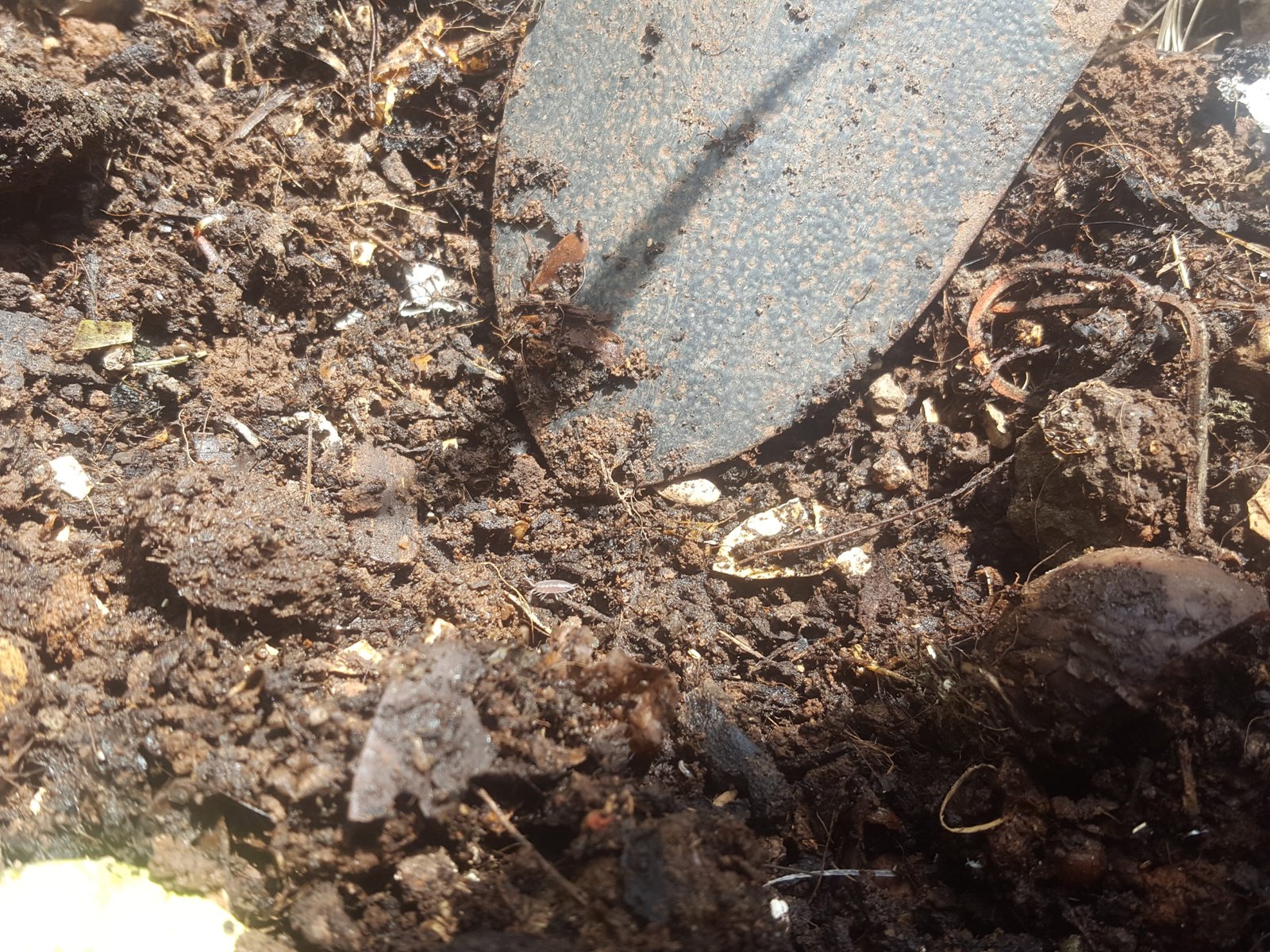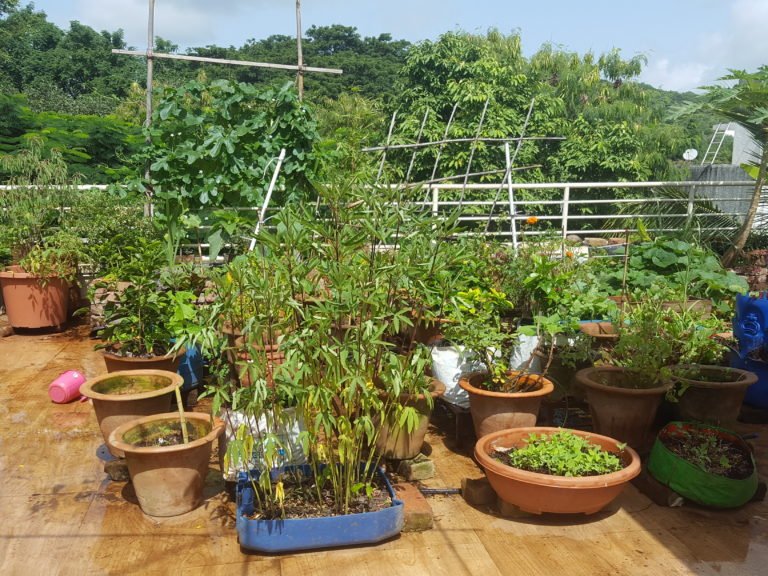Introduction
From time to time you will observe some insects in the compost. This is the stage when you would worry something has gone wrong. Then, there are our skeptical family members and neighbors who give you “I told you so” looks. They add to your concern.
Family members are worried, now these insects will invade the house. You get convinced something has horribly gone wrong with composting and all your efforts till now are wasted.
This article is especially for you to reassure there is nothing wrong. In fact if you do not see any bugs in your compost, then you should worry.
Yes, trust me. Read this article and relax. Rather learn about these small creatures who are there to make your life easier. They are doing all the work to make your project successful.
Bugs in compost? Worry not!!
Rather be concerned if there are no bugs.
Today’s blog focuses on various insects found in the compost.
Agreed, they are not very good looking, not very attractive types, but then again, beauty lies in the eyes of the beholder.
Once, you understand their role, I am sure, they will be your buddies. Slightly weird, funny-looking ones maybe, but buddies for sure.
A Bigger Picture
We always hear about resource scarcity. Even in nature, resources are limited. Yet, nature somehow has managed with that limited supply for so long, without running out.
What is the secret?
It is in its cyclic design. All the resources are used and re-used. Output of one system serves as input to some other system.
Substances are broken down and the components return to the system and are made available.
Each organism has a role to play in every step of this system.
Dry leaves, kitchen waste, all contain nutrients. But roots cannot take them as they are. We need microbes to convert them to the form in which tree roots can absorb them.
Microbes are called chemical decomposers.
Now, there is one more challenge to tackle. We need a set of organisms to break down the organic substance to the state at which microbes can process it.
Yes, we need mechanical decomposers. And that’s where our friends, insects come into picture.
My Experiment
I have a large planter. Currently I have dedicated it to insects. I deposited dry leaves and kitchen waste. Now, there are several layers of dry leaves and kitchen waste in this planter.
Since nothing is planted there, I can explore the contents freely. It is sort of my living laboratory. I dig a bit, shift some matter here and there. Various insects reside in this laboratory in huge numbers. With my explorations, they are disturbed. Rather only then I become aware of their existence. They are rarely at the surface, they almost never leave the planter. So basically, I don’t have any problem with insects invading my house. They are happy where they are.
Most of the dry leaves and kitchen waste I had fed them is broken down and looks like soil now. Only scraps seen is the kitchen waste that was deposited recently.
Broken down, soil-like substance has nice, earthly smell.
And best part is, I did not have to do anything. I did not bring those insects from somewhere. They came on their own. So, I am actually getting my work done, digesting kitchen waste and dry leaves and compost for my plants, for free. All I need to do is keep feeding them, which anyway is waste for me.
As I said earlier, everything in nature has a role to play. They arrived where organic matter was available to be broken down.
If I don’t add anymore dry leaves and kitchen waste to the planter, soon, all existing matter will be broken down and their work here will be done.
Some of the insects we will discuss today are wild roaches, white grubs, Black Soldier Flies (BSFs).
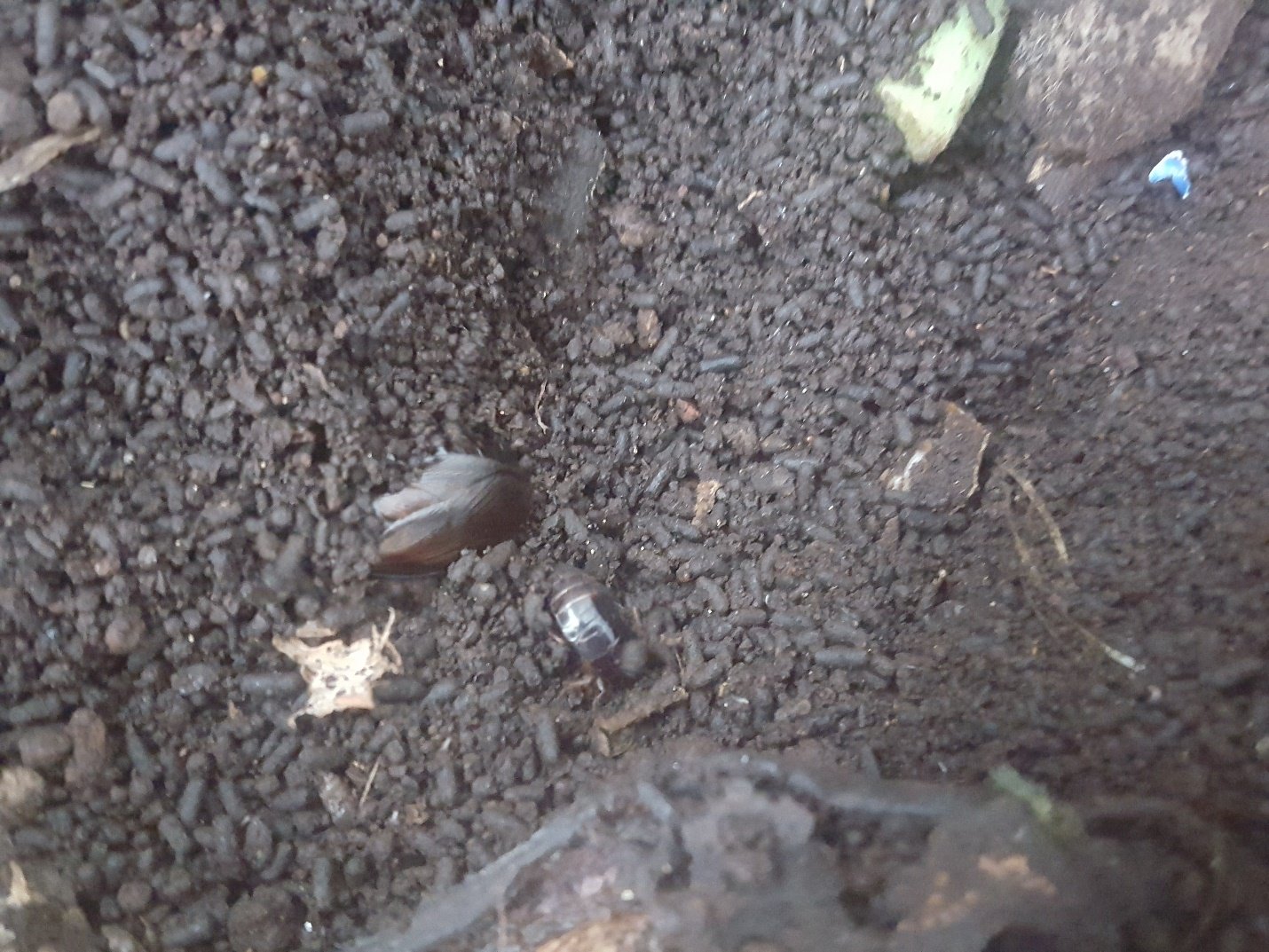
Wild roaches
They are wild cockroaches. Unlike the ones we find in our home, these remain in compost. They never come out of it, never enter our house. We become aware of their existence only when composting pot is disturbed.
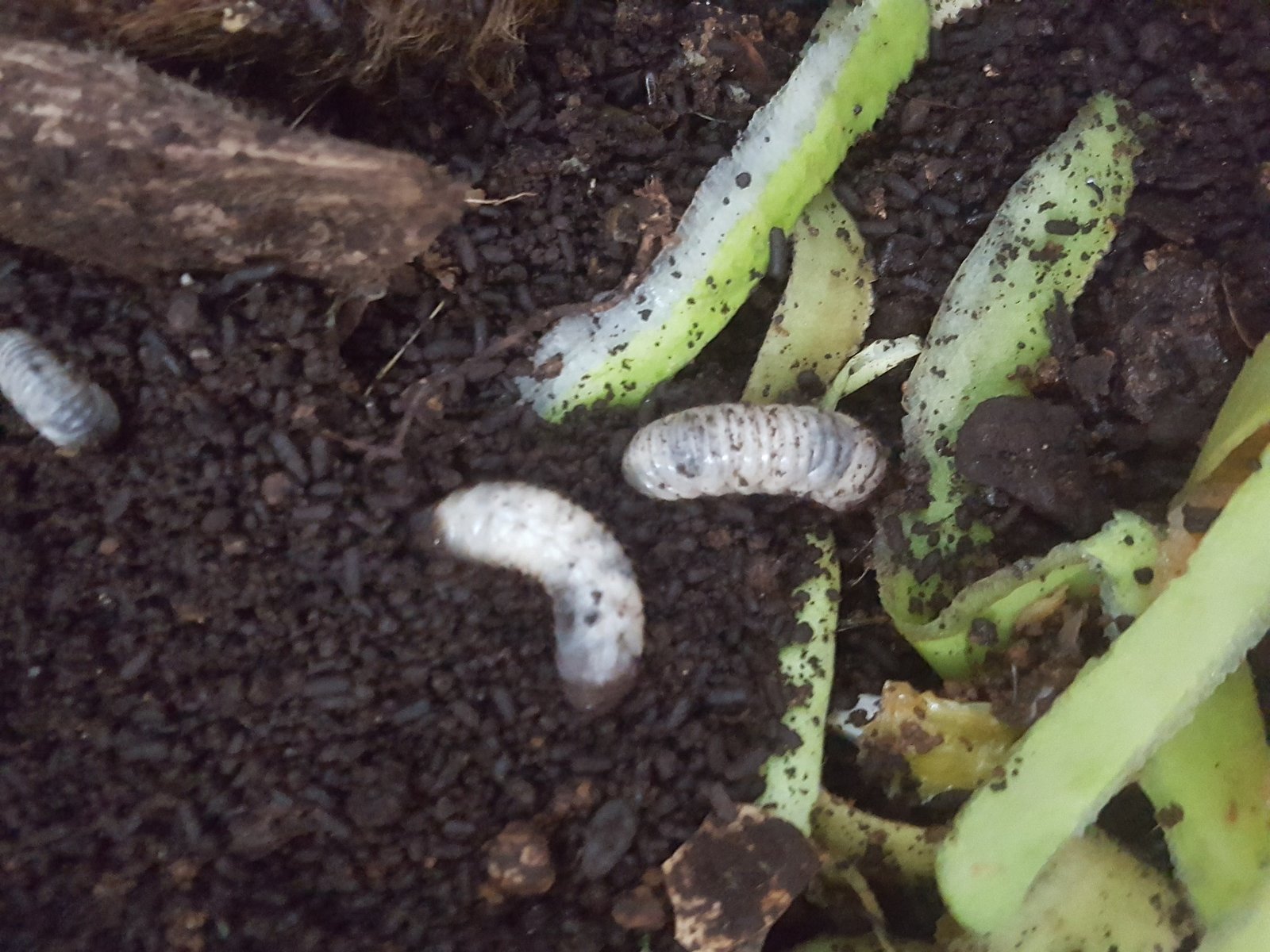
White grubs is a double edged sword. It is a very powerful decomposer. If you observe closely, you will actually see the compost layer moving when white grubs are at work. You will never find then on the surface. I had to disturb the organic matter, dig a bit, to get these ones in the photo.
Reason I called them double-edged sword is they can devour the plant roots. When leaves on your healthy, happy plants suddenly droop and plant dies in 2-3 days, for no apparent reason; usually these grubs are the cause.
White grubs fly can play havoc as well.
However, they are very useful in compost. In my planter, since there is no plant, only compost, I am not much worried about White Grubs at this moment.
It is a good idea to sieve the compost, remove white grubs and its eggs before adding compost to the plants.
Just transfer back those insects and eggs to composting pot and let them happily continue their work.

These are Black Soldier Fly’s larvae. They are happily devouring a watermelon peel. Cucurbitaceae family is their special favorite.
In a day, all flesh will be gone from this watermelon and only its dark green skin will remain.
Black Soldier flies are completely harmless. If your composting pot is in sunlight, sometimes these larvae may wander out looking for shade. Simply, cover the pot with a newspaper, to provide them shade, and they will not bother you.
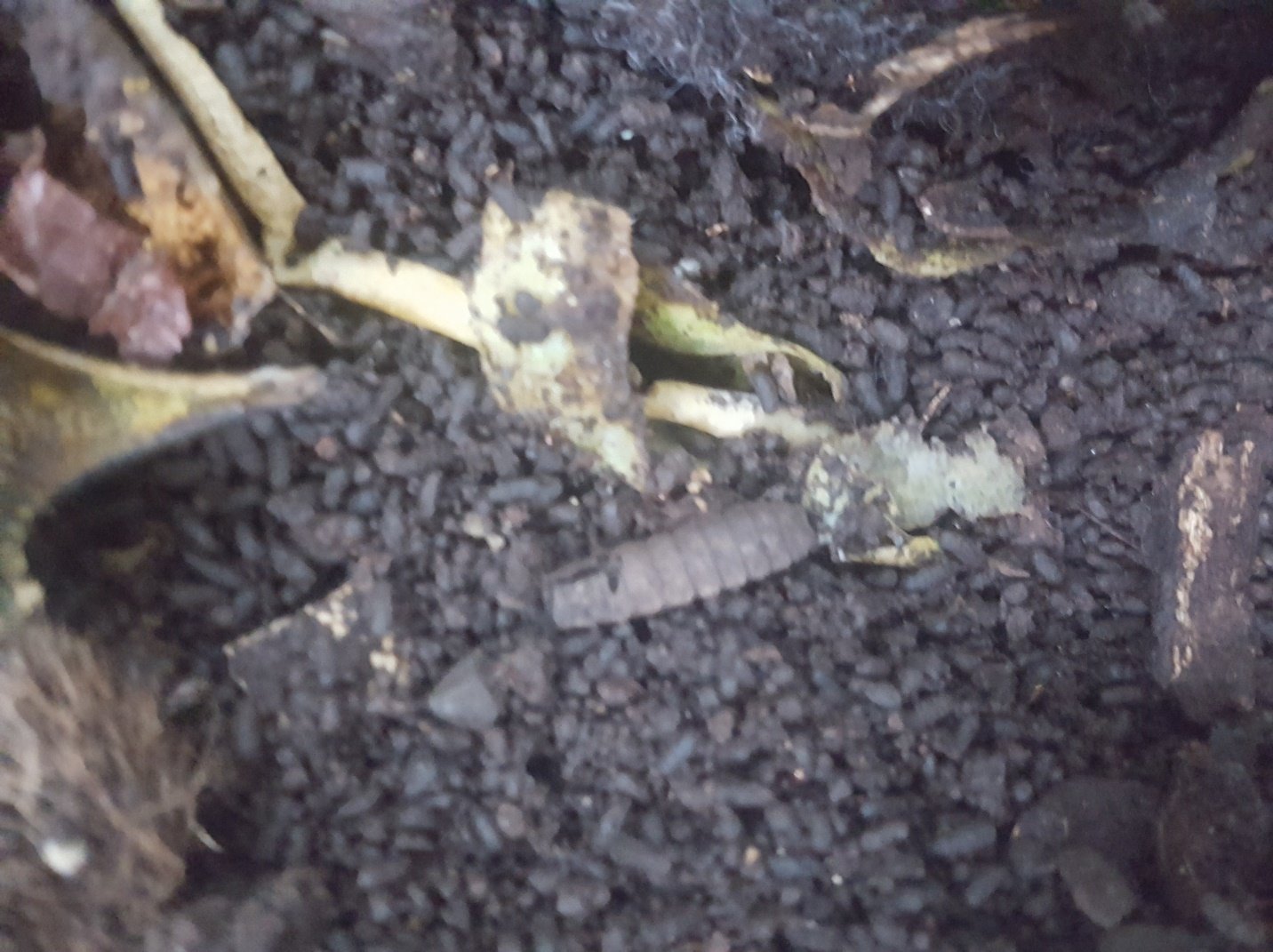
Soon, the skin of the larvae will harden, and a cocoon will be formed.
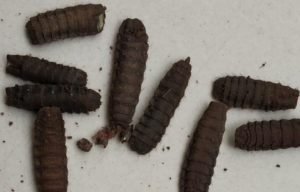
And eventually fly will come out of it and go away leaving behind this empty cocoon.
Cocoon is nothing but proteins. Gradually, cocoon will decompose, and nutrients are returned to the system.
Conclusion
Insects are vital part of our ecosystem. Yet, they are most neglected, much feared and much disliked creatures.
Due to our disdain, we are destroying insects at unprecedented rate. Sad part is, we don’t even know how much insect life we have destroyed so far, because no proper documentation exists of how much insect life we had to begin with.
Objective of this blog is to generate interest about them, understand their role and further, inspire readers to keep a record of them for future.

